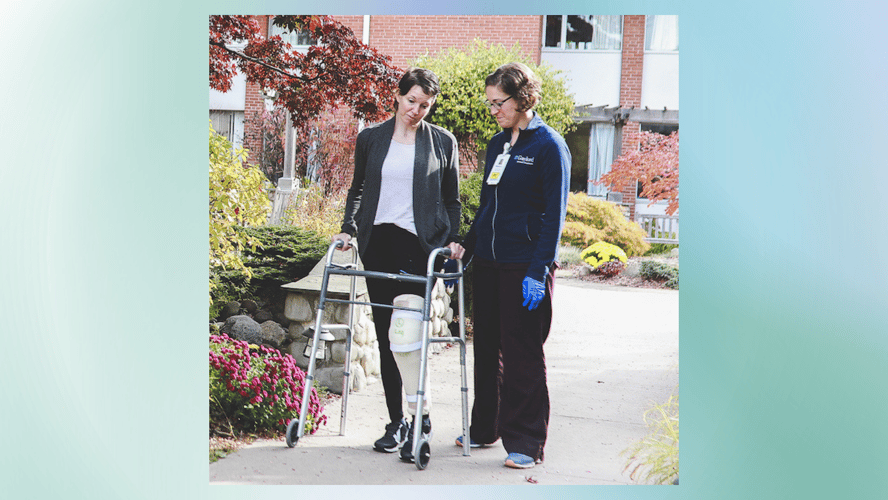Kaitlyn Rudolf, PT, DPT, CBIS, NCS
Caring for a loved one after a brain injury comes with many emotions and adjustments.
While the journey can be deeply meaningful, it can also bring unexpected challenges, including changes in behavior. Agitation, restlessness, and even moments of frustration or physical aggression can arise, but understanding these shifts - and knowing how to respond - can help create a calm and supportive environment for both you and your loved one.
Recognizing Signs of Escalation
Brain injuries affect individuals differently, and behavioral changes are a common part of the healing process. These changes can sometimes include restlessness, frustration, or difficulty expressing emotions. Recognizing the early signs of distress can help you respond in a way that keeps both you and your loved one feeling safe and supported.
Some signs that they may be feeling overwhelmed include:
- Increased restlessness or attempts to move around more than usual
- Expressing frustration, such as arguing or resisting assistance
- Speaking in a louder tone, using strong language, or raising their voice
- Changes in body language, like clenched fists or a tense posture
- Demonstrating physical expressions of frustration
If you notice these signs, responding quickly with patience and calmness can help prevent the situation from escalating.
Gentle Ways to Help Ease Frustration and De-Escalate the Situation
When your loved one is feeling overwhelmed, there are effective ways to help them feel calmer and more comfortable. De-escalation is about creating a sense of safety and redirecting energy in a positive way.
Here are some approaches that can help:
1. Maintain a Calm and Reassuring Presence
- Speak in a quiet, soothing tone.
- Avoid engaging in arguments, as this can add to their frustration.
- Keep communication simple - having just one person speak at a time can prevent them from feeling overwhelmed.
2. Create a Peaceful Environment
- Reduce background noise by turning off the TV or lowering other distractions.
- Adjust lighting to be softer and more comfortable.
- Keep the space as calm and predictable as possible.
3. Use Gentle and Open Body Language
- Keep your arms relaxed at your sides, rather than crossing them.
- Stand slightly to the side instead of directly in front of them.
-
If needed, lower yourself to their level to reduce any feelings of intimidation.
4. Acknowledge Their Feelings and Gently Redirect
- Let them know you understand that they’re upset.
- Reorient them to what is happening/has happened. However, if reminders of reality cause distress, gently shift the conversation or focus to something more comforting.
5. Try a Different Approach if Needed
- If one person’s presence seems to be adding to frustration, it may help for someone else to step in.
- A small change like taking a short walk or moving to a different room can sometimes reset emotions.
6. Allow Time and Space When Appropriate
- If it feels safe to do so, give them a little quiet time to help them regroup.
- Stepping away for a few moments can allow emotions to settle naturally.
7. Prioritize Safety and Seek Help When Needed
- Be mindful of your surroundings, ensuring that both you and your loved one are in a safe space.
- If the situation feels too overwhelming, continues to escalate, or is unsafe, don’t hesitate to seek support from professionals.
A Compassionate Approach to Care
Supporting a loved one through behavioral changes can be challenging, but small moments of patience and understanding can make a big difference. By recognizing early signs of distress and using calming strategies, you can help create a positive environment for recovery and an environment where both you and your loved one feel safe, valued, and supported.
Learn about the Ten Tips Every Family Caregiver Should Know in our blog, “When Traumatic Brain Injury Comes Home”
This content is for educational purposes only and is meant to provide general information. It is not a substitute for professional medical advice, diagnosis, or treatment. Always consult your healthcare provider with any questions or concerns about your health. In case of a medical emergency, contact your doctor or call 911 right away.


